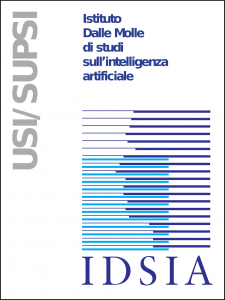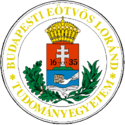ETH Zürich
|

- Institute: Computer Engineering and Networks Laboratory, Prof. Bernhard Plattner
- Senior researchers: Karin Anna Hummel, Domenico Giustiniano and formerly: Simon Heimlicher, Wolfgang Mühlbauer
- PhD researcher: Mahdi Asadpour
- Engineer: Simon Egli
- The objective of this subproject is to provide reachability for highly mobile wireless networks,
enabling communication between different classes of agents (flying robots, humans, and dogs).
- Details of the sub-project: Wireless networking has been an active area of research for more than
a decade now. Yet, providing connectivity remains a challenge in search-and-rescue
scenarios where a rescue team, often composed of humans, and trained dogs, tries to
locate as soon as possible a person or a source of danger. To improve the overall
mission efficiency, we propose to deploy a network of flying robots, humans and dogs
that can directly communicate via an aerial ad-hoc network. The ultimate objective of
this subproject is to provide reachability for highly mobile wireless networks, enabling
communication between different classes of agents (flying robots, humans, and dogs).
Amongst others, this requires a careful study of cross-layer interactions between
the MAC (medium access control), the routing, and the transport layer, and a scrutiny
of relevant existing methods (e.g., adhoc routing protocols, delay-tolerant networks).
Apart from combining and enhancing existing methods, the main challenge is to study
communication trade-offs related to controlled mobility: To what degree should network
nodes be able to control the mobility of other network nodes and what are the potential
benefits or drawbacks in terms of network performance? While we will rely on modeling and
simulations to explore various approaches, we plan to demonstrate the feasibility and
efficiency of our solutions within a real-world test.
|
EPF Lausanne
|

- Institute: Laboratory of Intelligent Systems, Prof. Dario Floreano
- Project leader: Jean-Christophe Zufferey
- PhD researcher: Maja Varga
- Technical assistant: Gregoire Heitz and formerly: Yannick Gasser
- The subproject aims at developing flying robots that can locally adapt to the needs of the other
agents by serving as an eye in the sky, communication relay, or as a guide for the dogs.
- Details of the sub-project: In most civil applications, such as search-and-rescue, workers
must have good situation awareness and communication to coordinate their actions and increase
their chance of success. For this purpose, we aim at developing flying assistants that can locally
adapt to the needs of the workers by serving as an eye in the sky or communication relay. In
particular, we aim at deploying flying assistants for humans and dogs in search-and-rescue missions.
Flying robots have the advantage of overcoming obstacles and clutter, thus providing rescuers with
a large perspective of the environment and line-of sight communication which is more efficient than
communication in obstructed areas on the ground. Furthermore, small flying robots can rapidly deploy
and reposition to accommodate the needs of the mission. To achieve scalable, flexible and dynamic
deployments, robots should reposition themselves in a self-organized manner and based on local interactions
with the rescuers and other flying robots. Moreover, the synergetic cooperation between the rescuers and
robots will be increased if they are able to share information in real-time through interfaces tailored
for their needs. For example, the flying robots could have access to the viewing direction and motion of
rescuers as well as information on who they are communicating with whereas the humans could receive
contextualized information from the other rescuers and robots if something interesting is detected. In
particular, the humans will be able to interact in a natural way with the flying robots and dogs, e.g., by
designating regions on a map which they need investigated. They will also receive alerts if additional flying
robots should be launched to maintain a communication link or inspect an area. Likewise, dogs will require
smart-collars equipped for vision, sound and touch and will be designed in collaboration with dog specialists
at ELTE, possibly based on existing systems. Promising directions include having dogs follow flying robots
similar to their natural behavior of following birds. Finally, as a strong proof of concept, we aim at validating
our research using a set of real flying robots, which have been developed and are currently used at the
Laboratory of Intelligent Systems.
|
IDSIA
|

- Institute: Istituto Dalle Molle di Studi sull’Intelligenza Artificiale, Prof. Luca Gambardella
- Project leader: Gianni di Caro
- PhD researcher: Eduardo Feo
- This subproject focuses on the issue of system-level planning, defining the joint action
patterns for the agents of a heterogeneous networked swarm.
- Details of the subproject: We study the control of systems composed of a large number
of embodied mobile agents with different sensory-motor and cognitive capabilities, and equipped with
wireless communication. We refer to such systems as heterogeneous networked swarms or, in short,
swarms. These swarms display high levels of heterogeneity and redundancy of resources, parallelism,
distributedness, and synergistic cooperation, which makes them highly suited for a number of important
real-world problems, such as, e.g., search and rescue, environmental monitoring, area surveillance,
goods delivery. We focus on the issue of swarm control, that is, the adaptive system-level planning of tasks
and movement patterns for the agents of a heterogeneous networked swarm. These system-level plans
are intended as general directives guiding but not forcing individual agents: agents can adapt the
received plan according to their local conditions, exploiting their local autonomy and intelligence.
It is crucial to have an adaptive planning system: using the network communication capabilities
of the swarm, the system continuously gathers information about the swarm agents and the
problem they are solving, and iteratively makes new plans or adapts existing ones according to
changing situations and progress in problem solution. The plans should take into account and
exploit the diversity and the redundancy of available resources, and, at the same time, robustly
deal with all the constraints resulting from the distributed, dynamic, and uncertain components
of the problem at hand.
We consider the following general problem scenario. In a distributed dynamic environment, a
number of locations need to be visited with the aim of performing some location-specific monitoring/
sensing or other task, subject to problem-specific constraints (e.g., constraints related to
the timing of task executions, or to skills required for the task). The locations are chosen based
on information that has been obtained about the environment. This information is derived from
data acquired during task execution and changes over time, prompting the need to choose different
locations. E.g., in a search task, locations to be visited can be parts of the area that have
not been explored yet, or that are expected to contain the target. Other problems that follow this
scenario are area surveillance, environmental monitoring, etc. We will address these problems using
heterogeneous networked swarms. We need to address two different issues. The first is to derive a
plan to visit all selected locations in the most effective and efficient way, and revise this plan
when new information becomes available. The second is to integrate data coming from different agent
sensors in order to update the information about the environment and the progress of the task, and
derive new locations to visit from this. The two activities run in parallel and influence each other
continuously. To deal with planning, we will model these scenarios in terms of vehicle routing problems
(VRPs). These are concerned with finding the best set of routes for a fleet of vehicles servicing
a number of customers/locations and respecting various operational constraints. In our case,
“vehicles” represent the embodied mobile agents. In the real-world scenarios we are interested in,
the VRP models will be subject to a number of constraints, e.g. related to agent capabilities and
reliability, or to uncertainties and dynamic variability in the problem environment. A solution, i.e.
a system-level plan, consists of a feasible assignment of locations and paths to individual agents:
what task an agent has to carry out, and how it gets to the location where it has to perform its
task. We will define and investigate various operational VRP models that can represent typical
situations of interest and propose robust solutions to the adaptive swarm planning problem.
To integrate data from the different agent sensors and derive information needed to do planning,
we study data fusion. Given the diversity among agents, data will have heterogeneous
properties, and due to possibly intermittent connectivity in the network, it will be available with
varying time lags. Therefore, we will develop robust techniques, based on the use of imprecise
probabilities, to manipulate and combine raw sensor and agent data, extract information from
them, and apply the resulting merged data to build models to be used for planning. In particular,
the imprecise information will be used to adaptively build semantically rich maps containing
the estimated status of task execution in different portions of the environment. A special case
of uncertainty that we will model and study results from the presence of agents that are very
noisy and hard to predict in their response to issued plans. In particular, this is the case of the
dog agents. In strict collaboration with partner ELTE, we will identify probabilistic models of the
expected dog behavior for use in planning.
|
Eötvös Loránd University, Budapest
|

- Institute: Department of Ethology, Prof. Ádám Miklósi
- Project leader: Prof. Ádám Miklósi
- PhD researcher: Anna Gergely, Linda Gerencsér
- The goal of this subproject is to establish a replicable and reliable procedure to train
dogs for collaborating in search tasks in heterogeneous swarms.
- Details of the sub-project: This projects aims at establishing a replicable and reliable
procedure to train dogs for collaborating in search tasks in a mixed swarm of humans and flying robots.
This is considered a task beyond the state of the art that advances basic scientific knowledge and has
practical applications. The task is broken down into two separate projects. Project 1 is concerned with
devising a system of sensors and a software application by the means of which the remote human and
flying robot is able to receive on-line information about the actual behavioural and physiological
state of the dog, and also some information about the local environment surrounding the animal.
We will use the combined output of several sensors to achieve a reliable judgement of the dogs
status which could be used to optimise the performance of the swarm, control the actions of the
dog, and take care of the welfare of the working dog. Project 2 is aimed at investigating the use of
an intelligent collar interface that aids communication with the remote dog. This work determines the
optimal nature and presentation of stimuli which should act as releaser (“command”) for pre-trained
behavioural actions. These releasers could involve vocal or verbal stimuli, as well as tactile stimulation.
By a similar process we establish the best method to reward the dog upon obeying commands or arriving at
the target. A special aspect of this project is to establish a direct interaction between the dog and the
flying robot. This would include the robot leading the dog towards an area. At the end of the project a
small team of dogs will solve search tasks by collaborating in a mixed swarm of humans and flying robots.
|







